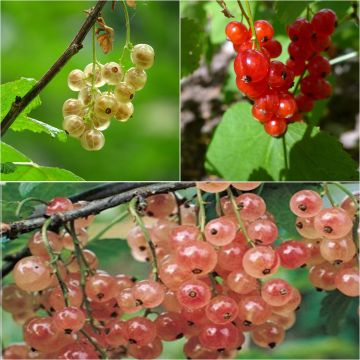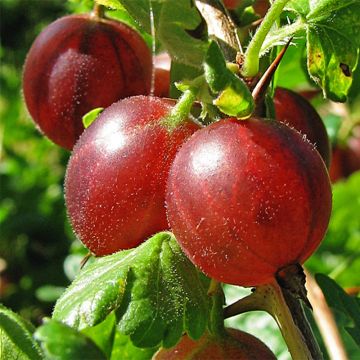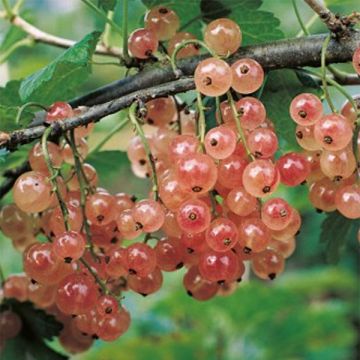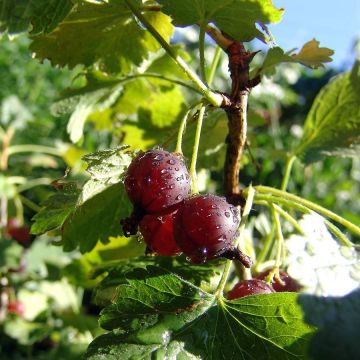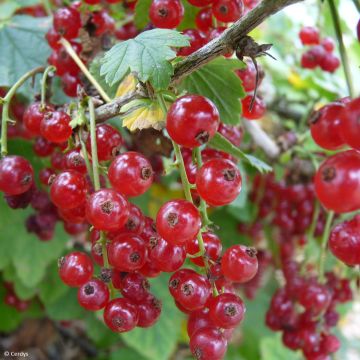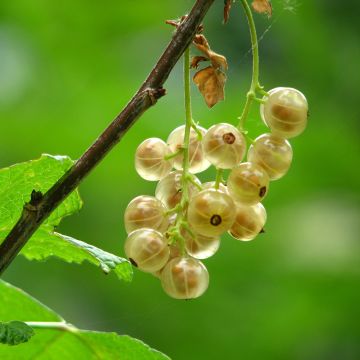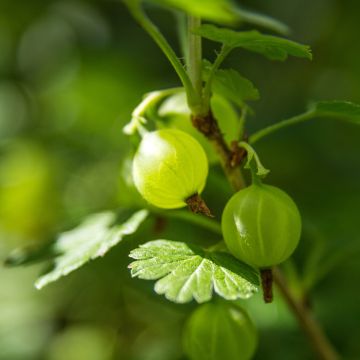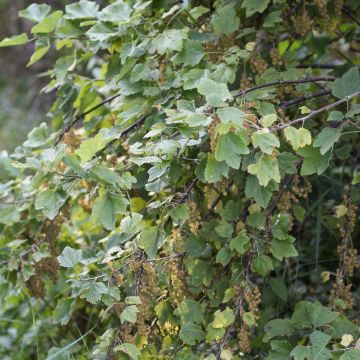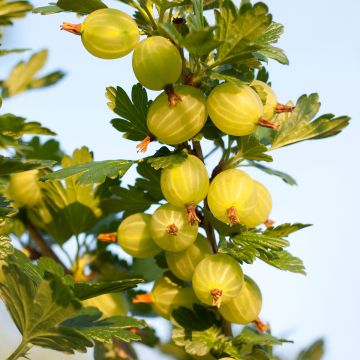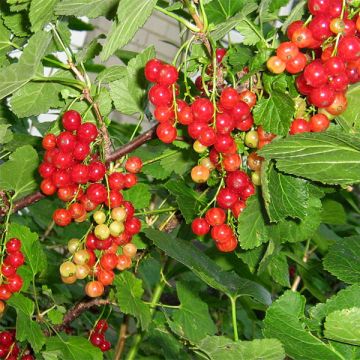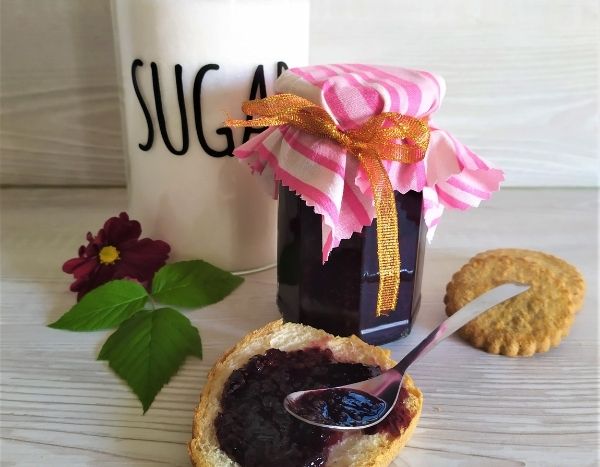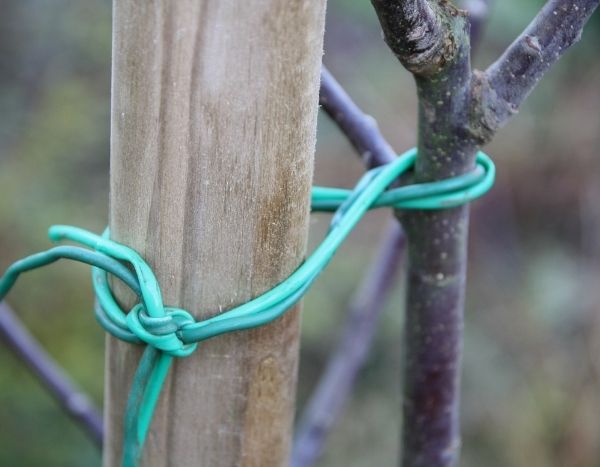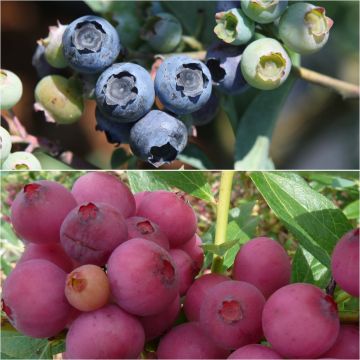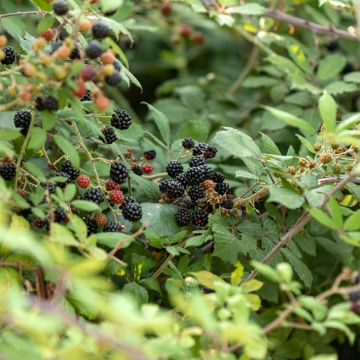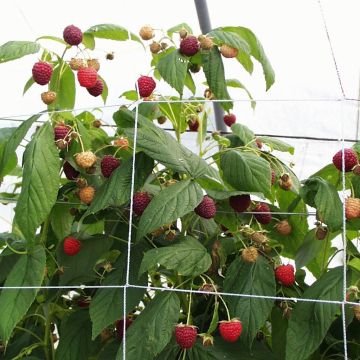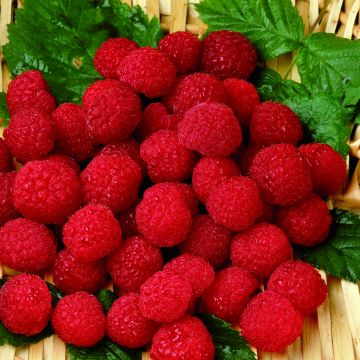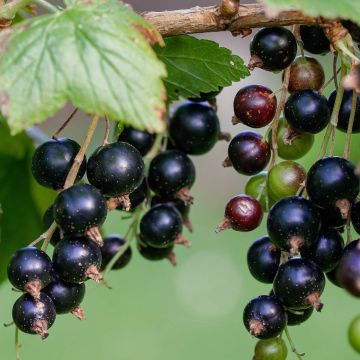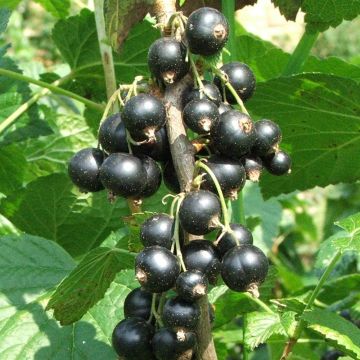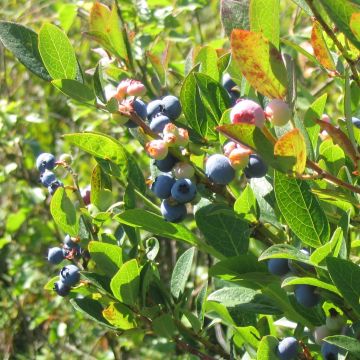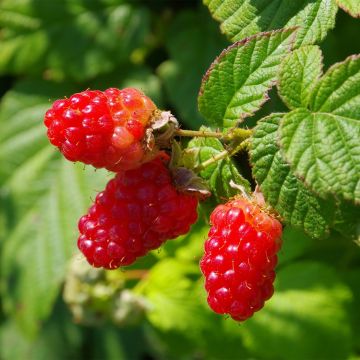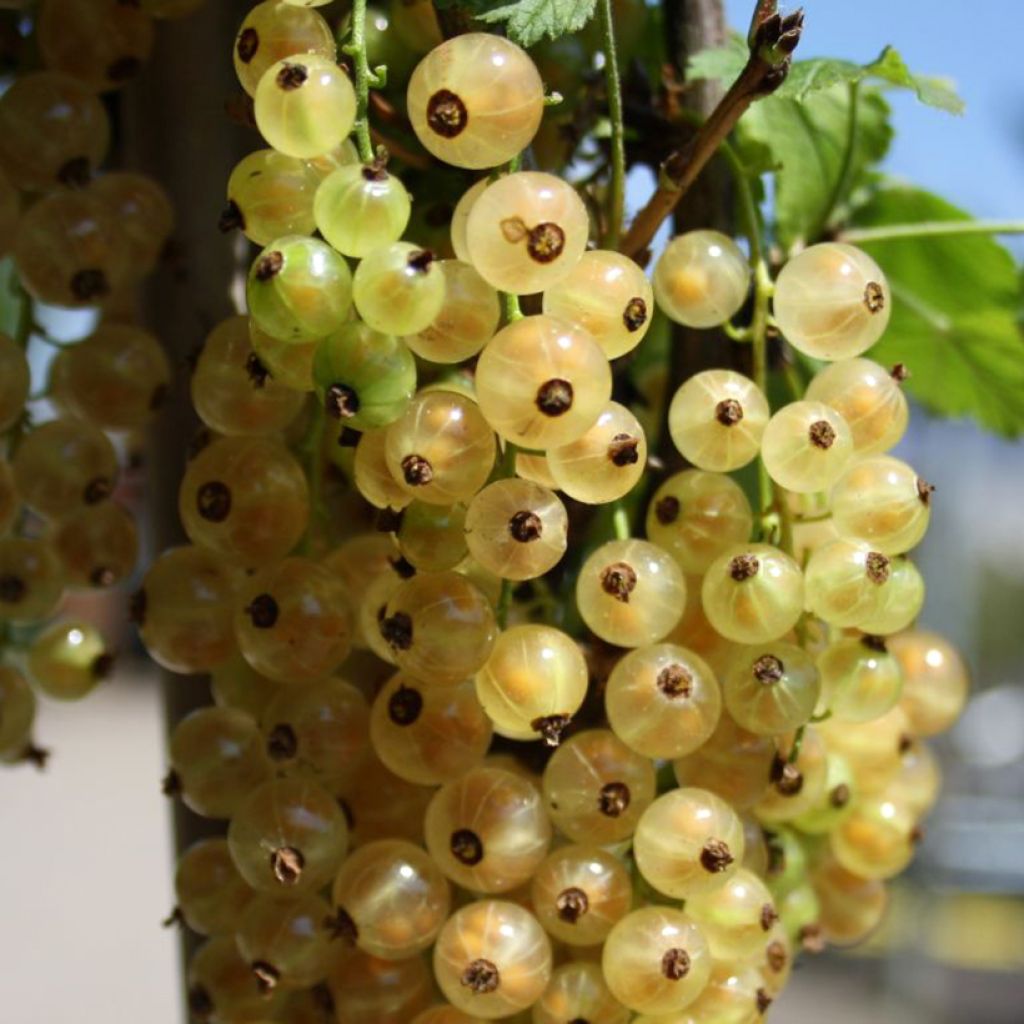

Ribes bianco Weiße aus Jüterbog
Ribes bianco Weiße aus Jüterbog
Ribes rubrum Weiße aus Jüterbog
Ribes bianco
Operazione speciale!
Ricevi un buono acquisto di 20 € per ogni ordine superiore a 90 € (escluse spese di spedizione, buoni e opzione senza plastica)!
1- Aggiungi le tue piante preferite al carrello.
2- Una volta raggiunti i 90 €, conferma l'ordine (puoi anche scegliere la data di consegna!).
3- Non appena il tuo ordine sarà spedito, riceverai un'e-mail contenente il codice del tuo buono acquisto, valido per 3 mesi (90 giorni).
Il tuo buono è unico e utilizzabile una sola volta, per qualsiasi ordine di importo minimo di 20 €, escluse le spese di spedizione.
Cumulabile con altre offerte in corso, non divisibile e non rimborsabile.
Consegna a domicilio o a staffetta (a seconda delle dimensioni e della destinazione)
Programmare la data di consegna,
e scegliere la data nel carrello
6 mesi garanzia di permuta su questa pianta
Altre informazioni
Garantiamo la qualità delle nostre piante per un intero ciclo di crescita e sostituiremo a nostre spese qualsiasi pianta che non si riprenda nelle normali condizioni climatiche e di impianto.
Descrizione del prodotto
Il Ribes rosso a grappoli bianchi Weisse aus Jüterbog è una varietà in grado di resistere agli inverni freddi e rigidi, anche a quote più elevate. Con una crescita piuttosto lenta e un portamento eretto, fiorisce tra aprile e maggio con piccoli fiori giallo pallido, quasi impercettibili, ma molto attraenti per le api e gli insetti utili del giardino. A partire dalla metà di luglio, i frutti raggiungono la maturità sotto forma di brevi grappoli, composti da bacche bianche crema, sferiche, che maturano uniformemente. La polpa è incolore, succosa, aromatica, abbastanza marcatamente acida. I frutti sono adatti sia al consumo fresco che alla trasformazione. Moderatamente produttiva, ma resistente alle malattie, è una varietà di facile coltivazione, in pieno sole non troppo caldo, su terreno ben drenato. Anche se questa varietà è autofertile, è preferibile piantare diverse varietà per favorire l'impollinazione incrociata e ottenere così un rendimento più elevato.
Il Ribes rosso, in latino Ribes rubrum (sin. sativum), è talvolta chiamato anche Gadelle o Raisinet. Appartiene alla famiglia delle Grossulariacee, come il Ribes nero, da cui si distingue per i frutti riuniti in grappoli. Le origini dalle regioni temperate dell'emisfero settentrionale e dalle Ande conferiscono al Ribes una grande resistenza al freddo. Coltivato da molto tempo, è stato introdotto in Francia nel Medioevo. Storicamente, nel XIV secolo, è stato principalmente utilizzato come pianta medicinale, gli speziali e guaritori gli attribuivano potenti virtù (febbrifugo, digestivo, lassativo, diuretico e depurativo). Nel XV e XVI secolo, il Ribes fa la sua comparsa nei giardini francesi. Poi nel XVIII secolo, Danesi e Olandesi intensificano la coltivazione dei ribes e li diffondono nel mondo.
Il Ribes rubrum ‘Weisse aus Jüterbog’, talvolta chiamato Bianco di Jüterbog, è una varietà antica ottenuta negli anni '90 del XIX secolo, a Juterbog, una città situata a 60 km a sud di Berlino (Germania). Nonostante l'arrivo di varietà più recenti, è ancora molto popolare in Europa e soprattutto in questo paese dai rigidi e lunghi inverni. Forma un cespuglio non spinoso, con portamento a ciuffo di rami un po' rigidi, poco ramificati, con legno tenero e midollo abbondante. Questo cespuglio, molto rustico, raggiungerà un'altezza di 1,50 m per un'ampiezza di 1,20 m. Le foglie sono decidue, composte da foglie palmate, lobate e aromatiche, di colore verde medio, profumate. La fioritura avviene in aprile, sotto forma di grappoli di piccoli fiori verdastri a brunastri insignificanti, intensamente visitati dalle api. La fruttificazione avviene soprattutto sui rami di uno e due anni. Di maturazione media, produce, a partire dalla metà di luglio, una grande quantità di grappoli, composti da numerose piccole bacche rotonde e traslucide. A maturità, le ribes sono di un bianco cremoso, brillanti e traslucidi, pieni di una polpa succosa, profumata, dolce e acidula, contenente minuscoli semi.
Il Ribes Bianco di Jüterbog è autofertile, quindi non ha bisogno di un compagno per fruttificare, ma la presenza di un'altra varietà nelle vicinanze aumenterà la produzione. La raccolta avviene man mano che i frutti maturano, e risulta semplificata dalla dimensione dei lunghi grappoli. La produzione di un ribes è di circa 2-4 kg di frutta per pianta a seconda dell'età e delle condizioni di coltivazione della pianta. Tutte le varietà di ribes sono ricche di vitamina C, antiossidanti, minerali, oligoelementi, potassio, calcio e fosforo, veri alleati per la salute. Inoltre, si classificano tra i piccoli frutti meno energetici (50 kcal per 100 g). Ricche di nutrienti, sono deliziose da gustare fresche, e per maggior golosità, si possono cospargere con un po' di zucchero cristallizzato. Ottime in gelatine o marmellate, si possono anche utilizzare per guarnire torte e preparare dolci. Saranno perfette nella produzione di sorbetti o gelati, in accompagnamento a carni rosse o per dare un tocco in più alle insalate composte.
In estate, questo ribes, con i suoi lunghi grappoli pendenti, simili a una fila di perle, saprà portare piacere e incanto. Si può associare a Cassissiers, Lamponi o altre varietà di piccoli frutti per formare una siepe commestibile, che saprà arricchire con i suoi molteplici vantaggi culinari. Come in qualsiasi piantagione, è importante alternare le specie e le varietà in una piantagione di ribes, dove possibile. In questo modo si limita il rischio di malattie e si favorisce l'impollinazione, anche se la varietà è autofertile. È possibile coltivarlo in vaso, ma è necessario scegliere un contenitore alto almeno 40 cm e assicurarsi di annaffiare regolarmente con acqua non calcarea.
Segnala un errore nella descrizione del prodotto
Ribes bianco Weiße aus Jüterbog in foto...
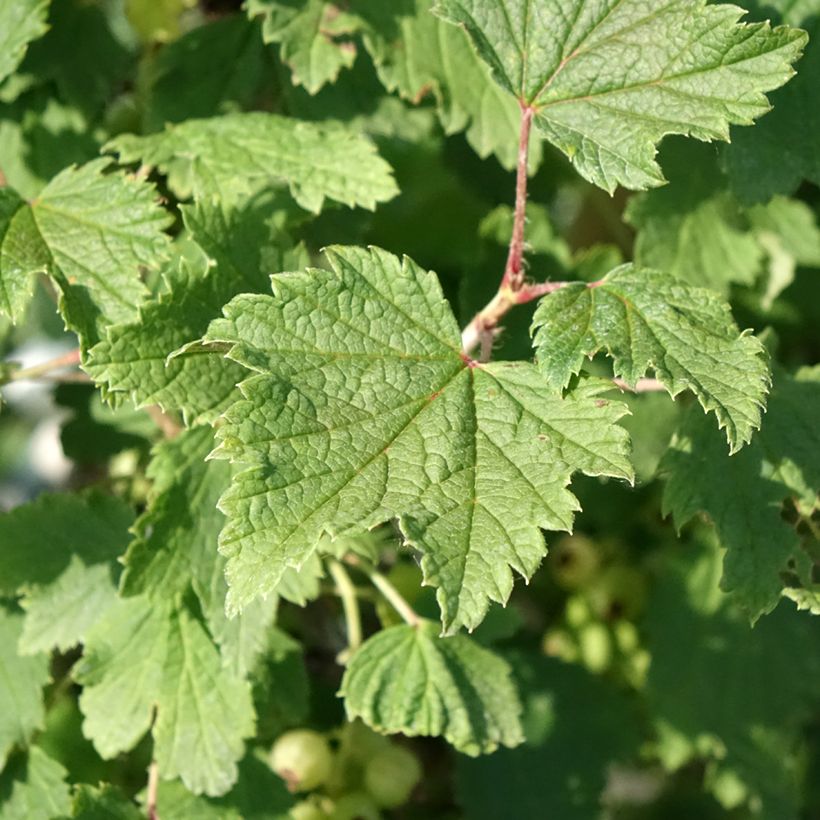

Porto
Frutta
Fioritura
Fogliame
Botanici
Ribes
rubrum
Weiße aus Jüterbog
Grossulariaceae
Ribes bianco
Orticola
Ribes rosso: Altre varietà
Vedi tutti →Piantagione e cura
Piantate il Ribes rosso a grappoli da ottobre a marzo, evitando periodi troppo freddi o troppo umidi. Apprezza terreni comuni, anche poveri, senza eccessivo calcare. Il Ribes rosso si trova bene in un terreno ben drenato, fresco ma non costantemente umido. Temendo il caldo e la siccità, piantatelo al sole nelle regioni a nord della Loira o a mezz'ombra al sud. Scegliete un luogo riparato dai venti violenti.
Alla piantagione, distanziate le piante di 1,20 m in tutte le direzioni. Per le piante a radici nude, immergete le radici in pralinato per evitare la formazione di sacche d'aria tra le radici e la terra. Potete preparare il pralinato mescolando 1/3 di terra molto fine o terriccio, 1/3 di letame bovino o compost e 1/3 di acqua piovana, oppure acquistarlo già pronto. Fate un buco, mescolate al terreno letame ben decomposto o compost maturo, posizionate la pianta e ricoprite di terra. Annaffiate abbondantemente. Successivamente pacciamate il terreno per mantenere la freschezza in estate.
Per la coltivazione in vaso: in un mix di terriccio e terra vegetale, predisponendo uno strato di drenaggio sul fondo del vaso forato. Nutrite il vostro Ribes rosso con compost o concime per piccoli frutti e annaffiate regolarmente per mantenere il substrato sempre leggermente umido ma non inzuppato.
Un apporto di concime organico all'avvio della vegetazione supporterà la produzione di frutti e la salute delle piante. È un arbusto accomodante, poco sensibile alle malattie. Ha alcuni nemici come i afidi, che possono essere eliminati spruzzando acqua saponata o una decotto d'aglio. In caso di attacco di oidio, spruzzate una soluzione di bordolese. A giugno-luglio, proteggete il raccolto con reti per contrastare la golosità degli uccelli. Per liberarsi dal verme dei lamponi, talvolta presente anche sulle ribes, potete seminare nontiscordardimé lungo la piantagione; si dice che lo facciano scappare.
È importante in una piantagione di ribes, come in qualsiasi piantagione, alternare varietà e specie quando lo spazio lo permette: favorirà l'impollinazione e limiterà lo sviluppo di epidemie o malattie.
Quando piantare?
Per quale località?
Trattamenti
I nostri consigli per la messa a dimora e la cura
Questo articolo non è ancora stato recensito; sii il primo a condividere la tua esperienza.
Articoli simili
Non hai trovato quello che cercavi?
La rusticità è la temperatura invernale più bassa che una pianta può sopportare senza subire gravi danni o addirittura morire. Tuttavia, la rusticità è influenzata dalla posizione (zona riparata, come un patio), dalla protezione (copertura invernale) e dal tipo di terreno (la rusticità è migliorata da un terreno ben drenato).

Condizioni generali di utilizzo del servizio fotografico per clienti
Al fine di favorire l'interazione e la condivisione di esperienze tra giardinieri, Promesse de fleurs offre diversi servizi che consentono di caricare contenuti sul proprio Sito, in particolare attraverso il modulo "Condivisione foto".
L'Utente si impegna a non:
- Pubblicare contenuti illegali, pregiudizievoli, ingiuriosi, razzisti, che incitano all'odio, revisionisti, contrari alla pubblica decenza, che violano la privacy o i diritti privati di terzi, in particolare il diritto all'immagine delle persone e dei beni, i diritti di proprietà intellettuale o il diritto alla privacy.
- Pubblicare contenuti per conto di terzi.
- Impersonare un terzo e/o pubblicare informazioni personali su un terzo.
In generale, l'Utente si impegna ad astenersi da qualsiasi comportamento non etico.
Tutti i Contenuti (in particolare testi, commenti, file, immagini, foto, video, opere, ecc.), che possono essere oggetto di diritti di proprietà, diritti di proprietà intellettuale, diritti di immagine o altri diritti privati, restano di proprietà dell'Utente, fatti salvi i diritti limitati concessi dalla licenza definita di seguito a Promesse de fleurs. Gli Utenti sono liberi di pubblicare o meno tali Contenuti sul Sito, in particolare tramite il servizio "Condivisione foto", e accettano che tali Contenuti diventino pubblici e liberamente accessibili, in particolare su Internet.
Essi riconoscono, si impegnano e garantiscono di disporre di tutti i diritti e le autorizzazioni necessarie per tale pubblicazione sul Sito, in particolare per quanto riguarda la legislazione in vigore e i diritti di privacy, di proprietà, di proprietà intellettuale, di immagine, contrattuali o di qualsiasi altra natura. Pubblicando tali Contenuti sul Sito, l'Utente è consapevole di assumersi la responsabilità di editore dei Contenuti ai sensi di legge e concede a Promesse de fleurs una licenza non esclusiva, gratuita e mondiale per tali Contenuti, per tutta la durata della loro pubblicazione, compresi i diritti di riproduzione, rappresentazione, caricamento, visualizzazione, esecuzione, trasmissione e archiviazione.
Gli Utenti autorizzano inoltre l'associazione del loro nome al Contenuto e accettano che tale associazione non sia sempre possibile.
Con la loro pubblicazione, gli Utenti autorizzano i Contenuti a diventare automaticamente accessibili su Internet, in particolare su altri siti e/o blog e/o pagine web del sito Promesse de fleurs, comprese in particolare le pagine dei social network e il catalogo Promesse de fleurs.
Gli Utenti possono liberamente ottenere la restituzione dei Contenuti affidati contattando il servizio clienti tramite il modulo di contatto.
I periodi di semina indicati sul nostro sito web si riferiscono a Paesi e regioni all'interno della Zona USDA 8 (Francia, Regno Unito, Irlanda, Paesi Bassi).
Nelle zone più fredde (Scandinavia, Polonia, Austria...), ritardare le semine all'aperto di 3-4 settimane o seminare sotto vetro.
Nei climi più caldi (Italia, Spagna, Grecia, ecc.), anticipare la semina all'aperto di qualche settimana.
Il periodo di raccolta indicato sul nostro sito web si riferisce ai Paesi e alle regioni della zona USDA 8 (Francia, Inghilterra, Irlanda, Paesi Bassi).
Nelle zone più fredde (Scandinavia, Polonia, Austria...) la raccolta di frutta e verdura potrebbe essere ritardata di 3-4 settimane.
Nelle zone più calde (Italia, Spagna, Grecia, ecc.), la raccolta avverrà probabilmente prima, a seconda delle condizioni meteorologiche.
Il periodo di semina indicato sul nostro sito web si riferisce a Paesi e regioni situati nella zona USDA 8 (Francia, Regno Unito, Irlanda, Paesi Bassi).
Varia a seconda del luogo di residenza:
- Nelle zone mediterranee (Marsiglia, Madrid, Milano, ecc.), l'autunno e l'inverno sono i periodi migliori per la semina.
- Nelle zone continentali (Strasburgo, Monaco, Vienna, ecc.), ritardare la semina di 2 o 3 settimane in primavera e anticiparla di 2 o 4 settimane in autunno.
- Nelle regioni montuose (Alpi, Pirenei, Carpazi, ecc.), è meglio piantare in tarda primavera (maggio -giugno) o in tarda estate (agosto-settembre).
Nei climi temperati, la potatura degli arbusti a fioritura primaverile (forsizia, spiree, ecc.) deve essere effettuata subito dopo la fioritura.
La potatura degli arbusti a fioritura estiva (lillà indiano, perovskia, ecc.) può essere effettuata in inverno o in primavera.
Nelle regioni fredde e con piante sensibili al gelo, evitate di potare troppo presto quando possono ancora verificarsi forti gelate.
Il periodo di fioritura indicato sul nostro sito web si riferisce a paesi e regioni situati nella zona USDA 8 (Francia, Regno Unito, Irlanda, Paesi Bassi, ecc.).
Varia a seconda della zona di residenza
- Nelle zone da 9 a 10 (Italia, Spagna, Grecia, ecc.), la fioritura avverrà da 2 a 4 settimane prima.
- Nelle zone da 6 a 7 (Germania, Polonia, Slovenia e regioni montuose inferiori), la fioritura sarà ritardata di 2 o 3 settimane.
- Nella zona 5 (Europa centrale, Scandinavia), la fioritura è ritardata di 3-5 settimane.






























